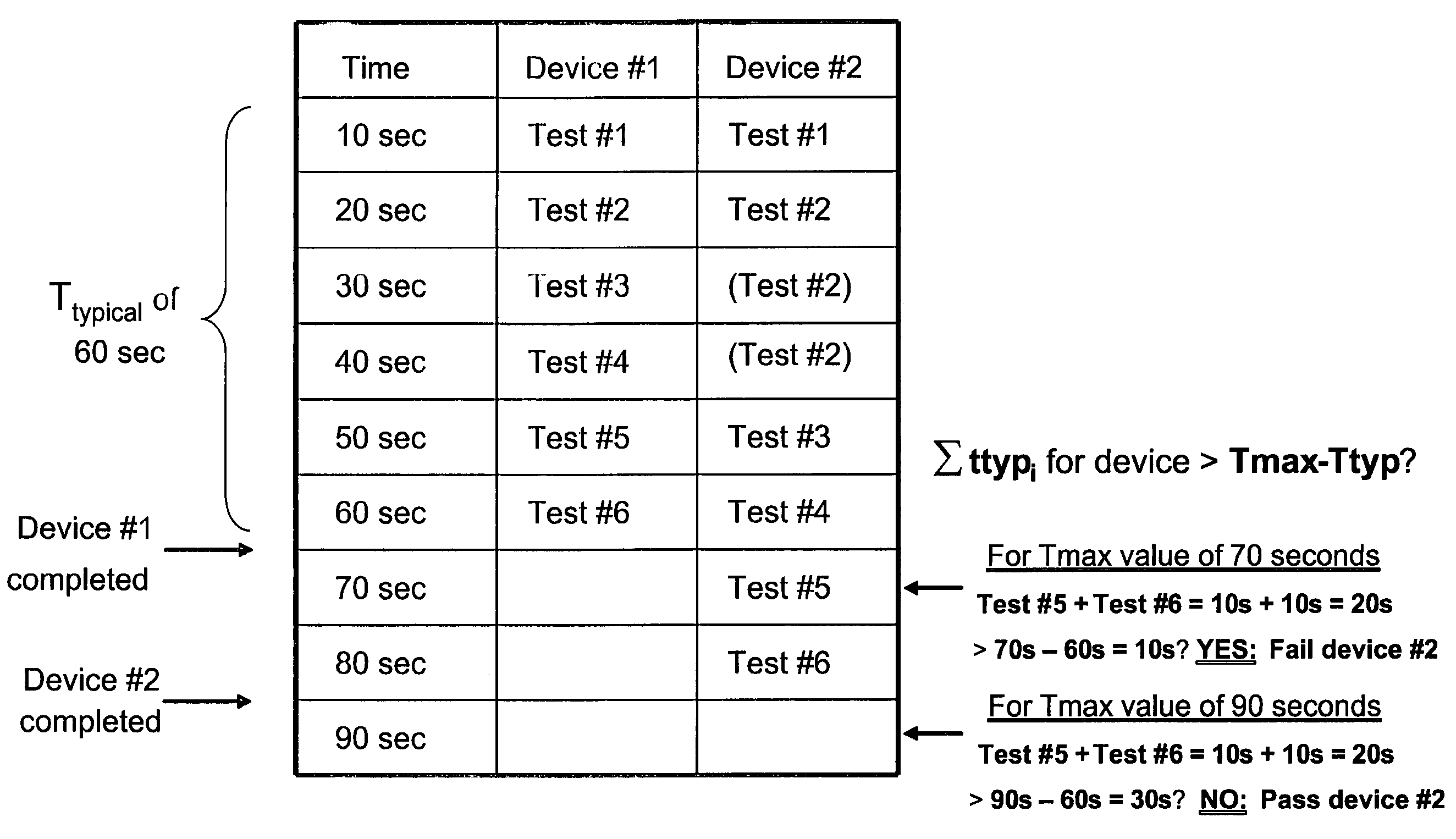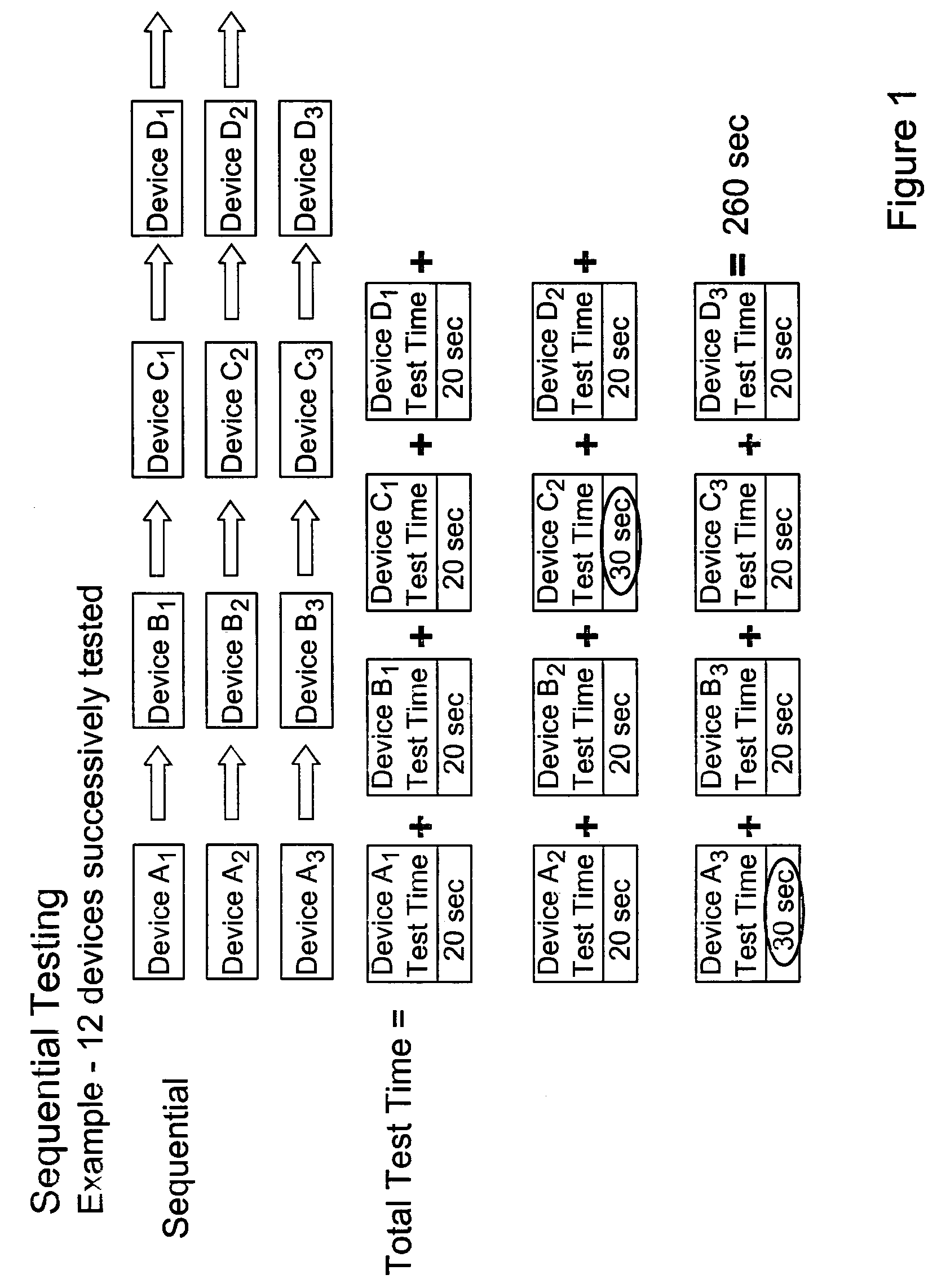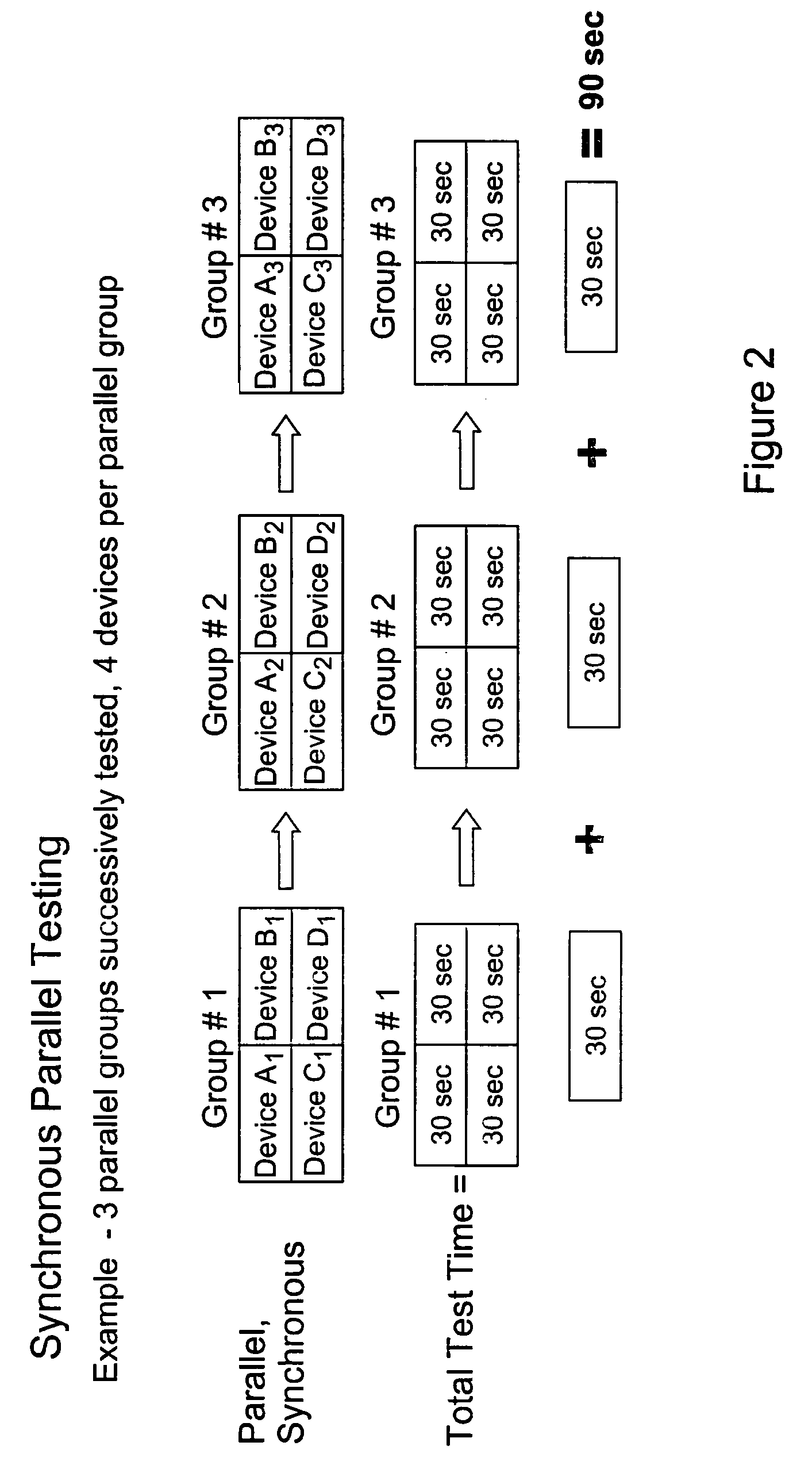Methods for slow test time detection of an integrated circuit during parallel testing
a technology of integrated circuit and parallel testing, applied in the direction of electrical testing, measurement devices, instruments, etc., can solve the problems of test failure, aberrant circuit behavior, and greatly degraded performance of any given devi
- Summary
- Abstract
- Description
- Claims
- Application Information
AI Technical Summary
Benefits of technology
Problems solved by technology
Method used
Image
Examples
Embodiment Construction
[0046]Described herein are embodiments of the current invention for semiconductor testing, including methods and systems that will automatically and in “real-time” identify devices exhibiting abnormally long test time (also termed below as too-slow testing devices, devices testing too slowly, abnormal devices or aberrant devices) during the course of testing. The forced early termination of the testing of such devices is facilitated under circumstances which depend on the embodiment, allowing test operations to progress sooner to the next untested device or group of devices to improve a test operation's overall efficiency.
[0047]Test capacity is defined as the volume of material (i.e. number of devices) that can be processed through a factory test operation within a fixed period of time given the available test equipment and test times for that operation. Assuming that the available test equipment remains unchanged, increased test capacity (for example through the lowering of test ti...
PUM
 Login to View More
Login to View More Abstract
Description
Claims
Application Information
 Login to View More
Login to View More - R&D
- Intellectual Property
- Life Sciences
- Materials
- Tech Scout
- Unparalleled Data Quality
- Higher Quality Content
- 60% Fewer Hallucinations
Browse by: Latest US Patents, China's latest patents, Technical Efficacy Thesaurus, Application Domain, Technology Topic, Popular Technical Reports.
© 2025 PatSnap. All rights reserved.Legal|Privacy policy|Modern Slavery Act Transparency Statement|Sitemap|About US| Contact US: help@patsnap.com



